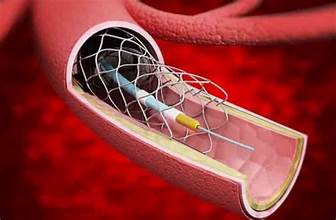Embolic Protection Device Market Analysis
The global embolic protection device market was valued at US$ 1.12 billion in 2023 and is projected to grow to US$ 2.11 billion by 2032, representing a CAGR of 7.29% from 2024 to 2032. Key drivers for this growth include the increasing prevalence of cardiovascular diseases, heightened awareness of minimally invasive procedures, and technological advancements in medical devices.
Embolic Protection Device Market Overview
Embolic protection devices are specialized instruments designed to prevent the migration of debris, blood clots, or other harmful particles during minimally invasive cardiovascular procedures. By capturing and containing emboli, these devices enhance the safety and success of treatments such as atherectomy, stent implantation, and angioplasty, thereby reducing the risk of complications like stroke or organ damage.
The rising prevalence of cardiovascular diseases, including atherosclerosis and coronary artery disease, is boosting the demand for these devices, especially as the adoption of minimally invasive procedures becomes more common in various medical fields.
Growth Drivers in the Embolic Protection Device Market
- Increasing Prevalence of Cardiovascular Diseases
The rise in cardiovascular disorders, such as coronary artery disease and atherosclerosis, is a significant driver for the embolic protection device market. As lifestyle-related health issues become more common and the global population ages, the demand for interventions like angioplasty and stenting grows, necessitating effective embolic protection solutions to mitigate risks associated with these procedures. - Rising Preference for Minimally Invasive Procedures
There is a growing trend toward minimally invasive surgical techniques across various medical specialties. These procedures often carry a higher risk of embolization, making embolic protection devices essential for ensuring patient safety. The shift toward less invasive options is fueled by benefits such as reduced recovery times and shorter hospital stays, further driving the demand for these protective devices. - Technological Advancements
Innovations in medical technology have led to the development of more efficient and effective embolic protection devices. Advances such as improved filter designs, enhanced materials (like nitinol and polyurethane), and better delivery systems have increased the efficacy and safety of these devices during cardiovascular interventions, spurring market growth. - Increased Healthcare Expenditure
Rising healthcare spending, particularly in developed regions, supports the adoption of advanced medical technologies, including embolic protection devices. As healthcare systems focus on improving patient outcomes and safety, investments in innovative solutions are likely to rise. - Regulatory Approvals and New Product Launches
The continuous approval of new embolic protection devices by regulatory bodies enhances market availability and competition. Companies are actively working on product development and improvements, leading to a wider range of options for healthcare providers and increased adoption of these devices in clinical practice. - Growing Awareness and Training
Increased awareness among healthcare professionals regarding the importance of embolic protection during cardiovascular procedures is contributing to market growth. Educational initiatives and training programs emphasize the significance of these devices in enhancing patient safety and improving procedural outcomes.
North America Embolic Protection Device Market Overview
North America is expected to dominate the global embolic protection device market, fueled by a rise in cardiovascular conditions and a well-developed healthcare infrastructure. Key factors include:
- Increased cases of carotid artery disease and coronary heart disease.
- High obesity rates contributing to heart disease.
- Growing regulatory approval for new medical technologies.
- A high level of awareness regarding minimally invasive surgical options.
With significant heart disease statistics in the U.S., including over 800,000 heart attacks annually, the need for angioplasty and related procedures is expected to increase, driving the demand for embolic protection devices.
Embolic Protection Device Market Company Overview
Leading companies in the global embolic protection device market include:
- Abbott Laboratories
- Allium Medical Solutions Ltd.
- Boston Scientific Corporation
- Cardinal Health Inc.
- Edwards Lifesciences Corporation
- Medtronic Inc.
- Silk Road Medical Inc.
Embolic Protection Device Market News
- September 2023: Penumbra and Asahi Intecc announced a partnership to introduce Penumbra’s Indigo aspiration system to the Japanese market, enhancing treatment options for pulmonary embolism and thrombus removal.
- January 2023: Cardinal Health Inc. formed a strategic partnership with Palantir to innovate supply chain management in healthcare, aiming to revolutionize distribution and inventory systems.
- August 2023: Abbott Laboratories received FDA approval for its new embolic protection device designed for use during percutaneous coronary interventions, which is expected to significantly enhance patient safety and procedural outcomes.
- April 2023: Boston Scientific Corporation launched an updated version of its embolic protection device that features advanced filtering technology, increasing its efficacy in capturing debris during cardiovascular procedures.
- March 2023: Medtronic Inc. announced the expansion of its embolic protection device portfolio with the introduction of a new, next-generation device that offers enhanced flexibility and ease of use for clinicians.
Market Segmentation
Product:
- Distal Filter Devices:These devices are designed to capture debris during procedures, preventing it from entering the bloodstream and causing embolization.
- Distal Occlusion Devices:Used to block blood flow in specific areas to minimize the risk of emboli during vascular interventions.
- Proximal Occlusion Devices:These devices occlude blood flow at the source to protect distal sites during procedures.
Application:
- Coronary Artery Treatment:Devices used during interventions such as angioplasty and stenting to protect coronary arteries from embolization.
- Carotid Artery Treatment:Specifically designed for use in carotid artery procedures, addressing risks associated with plaque removal and stenting.
- Others:Additional applications that may include interventions in other vascular territories or specialized procedures.
Procedure:
- Percutaneous Coronary Intervention (PCI):Minimally invasive procedures to treat narrowed coronary arteries, often requiring embolic protection.
- Carotid Artery Stenosis:Procedures aimed at treating narrowing in the carotid arteries, where embolic protection is crucial.
- Saphenous Vein Graft Intervention:Techniques used in coronary bypass surgeries, needing protection against potential emboli.
- Aortic Valve Stenosis (Transcatheter Aortic Valve Replacement):Procedures to replace aortic valves where embolic risks must be mitigated.
- Others:Other interventional procedures that may benefit from the use of embolic protection devices.
Material:
- Nitinol:A nickel-titanium alloy known for its flexibility and strength, commonly used in the construction of embolic protection devices.
- Polyurethane:A versatile material used for its durability and biocompatibility in various medical applications.
Usage:
- Disposable Devices:Designed for single use to ensure sterility and reduce the risk of infection.
- Re-Usable Devices:Built for multiple uses, requiring careful cleaning and sterilization processes.
End User:
- Hospitals and Clinics:The primary settings where embolic protection devices are utilized during various vascular procedures.
- Ambulatory Surgical Centers:Facilities focused on outpatient procedures, where embolic protection may be necessary for certain interventions.
- Others:Additional healthcare settings that may use these devices in specific surgical or interventional contexts.
Related Reports
- Photodynamic Therapy Market
This report analyzes the global photodynamic therapy market, covering market size, trends, and key players. It explores the increasing applications of photodynamic therapy in treating various conditions, including cancer and skin disorders, driven by technological advancements and rising awareness among healthcare providers. - Saudi Arabia Contact Lenses Market
This report delves into the Saudi Arabian contact lenses market, detailing market dynamics, growth factors, and competitive landscape. The rising prevalence of vision-related issues and an increasing preference for cosmetic and corrective lenses are key drivers of growth in this market. - Vision Care Market
This comprehensive report on the global vision care market covers various segments, including eyeglasses, contact lenses, and vision correction procedures. It highlights market trends, technological advancements, and the impact of changing lifestyles on vision care demands.
Key Players Analysis
All key players have been covered with details on their:
- Overview
- Recent Developments & Strategies
- Product Portfolio & Launches in the Last Year
- Revenue Analysis





